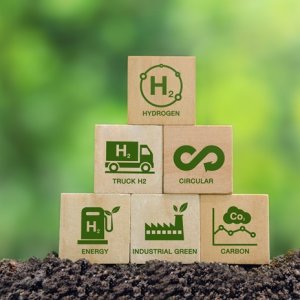
Green Hydrogen Potential for Project Development
 By Andrea Villar | Editorial Manager -
Thu, 09/02/2021 - 18:31
By Andrea Villar | Editorial Manager -
Thu, 09/02/2021 - 18:31
You can watch the video of this presentation here.
Beyond reducing its carbon footprint, Mexico can attract investment and foster economic growth in neglected regions through the production and use of green hydrogen. However, there is still a long way to go before this resource is recognized as a viable alternative by society and businesses in the country.
“Today, more than ever, it is clear that a country with energy availability is a country that will experience economic growth,” said Fernando Tovar, CEO and Country Manager of ENGIE Mexico. This has boosted hydrogen’s potential as an alternative energy source. The trend toward green energy, driven by new consumer demands, has also boosted the recognition of this energy resource. “It is no longer a choice that a company or a country makes but a matter of consumer demand for products with a lower carbon footprint. This includes not only the materials from which a product is made but also the energy used to manufacture it. Producers, faced with demand, have been looking for green energy alternatives,” said Tovar.
Green hydrogen is generated from renewable energies through a process called water electrolysis, through which oxygen is separated from hydrogen. Unlike grey or blue hydrogen, this process is considered clean and an essential piece in the energy transition puzzle, explained Veronica Zapata Oviedo, Member of the Association of Women in Renewable Energy Mexico (MERM).
The electrification trend has permeated several industrial and consumer activities, although electricity generation still considers fossil fuels. However, hydrogen can also participate in this transformation and there are specific niches where this green fuel can be an ideal alternative. “For industries like steel, chemicals or oil and gas that need a gaseous energy source and currently rely on natural gas, hydrogen provides an answer,” said Tovar.
In February this year, multiple severe winter storms caused power outages in Texas. Record-low temperatures caused the state's electric grid operator to lose control of the power supply, leaving millions without access to power, water and food for days. Without a resource to warm themselves, the total death toll rose to more than 210, according to the New York Times. Further investigation later revealed that one of the causes was inadequately winterized natural gas equipment.
According to Jeroen Visser, Global Director for Hydrogen at Northland Power, 30 percent of economic activities can be electrified. This percentage represents 45 percent of global CO2 emissions. “Hydrogen provides access to clean and affordable energy. This resource makes clean energy global and democratized. Global trade is the game-changer for me,” he says.
Global efforts towards energy transition and decarbonization established in the 2030 Agenda approved in 2015 and the Paris Agreement signed in 2016 have also paved the way for green hydrogen, says Israel Hurtado, President of the Mexican Hydrogen Association. This new fuel, however, has several milestones ahead, including a decrease in its cost, which is predicted to start falling in 2025 following its widespread use. “This already happened with solar energy eight years ago. It used to cost around US$3.5 million to install a Megawatt of solar power and now it is around US$600,000,” Hurtado says. Today, there are already diverse uses and applications of hydrogen in industries like automotive, maritime and aerospace. Just in August, the 24 Hours of Le Mans, the oldest active endurance event in the racing industry, announced that hydrogen cars will be able to compete in 2025.
“I do not see any other solution in the short term to reduce and stop global warming,” Hurtado says. “Efforts so far have failed.”
















